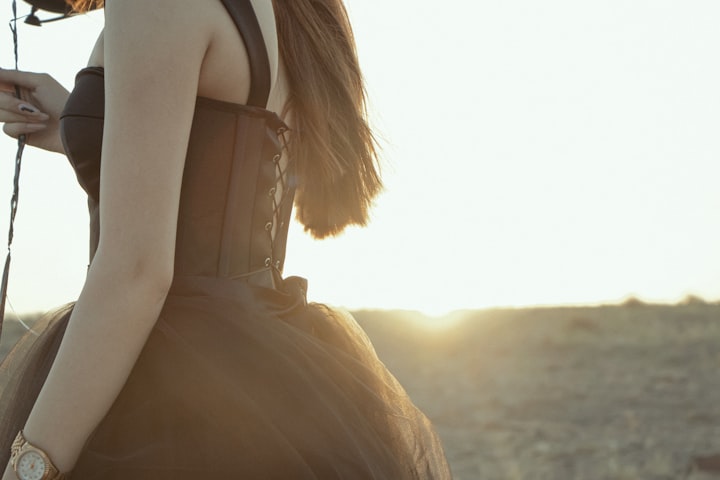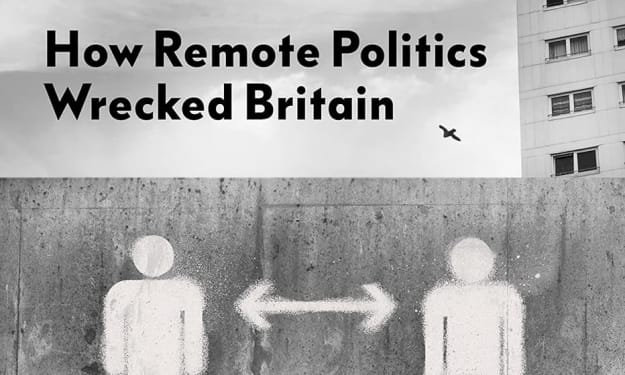My Loki is Not a Marvel Villain
The Underuse of Norse Myths

Since 2011, Marvel Cinematic Universe has laid claim to the glorious world of Norse mythology, forged by Scandinavian ancestors. Many die hard fans have believed this claim, and all the lore the studios have been adding to fit their numerous overlapping plotlines. Marvel has referenced actual parable tales from Norse mythology, such as Loki playing a trick on Sif by cutting off all her hair while she slept. The references, while at times being delightfully subtle in nature, making it pleasing to those who know the actual tales, the entirety of the series still lacks an accurate representation of the nine realms of Norse mythology overall. In fact, I believe Marvel, the film and television production companies in general, are guilty of misusing Norse mythology in such a way that it never reaches the height of its true potential. The nine realms have so much more to offer, yet fans rarely see more than a basic interpretation of the three most commonly known realms, Midgard, Asgard, and Jotunheim. Jotunheim still has a tendency not to be used in plotlines as readily as the other two, more often using characters that are from that realm, instead of having the plotline take place in that location.
Of the nine realms, the other six are rarely even mentioned in films and TV series. Even in literature, some of these realms lack even basic representation. I find this to be most tragic, considering these are some of the realms that intrigue me the most as a Norse Mythology fan. Vanaheim, the realm of the Vanir, is so vague in the description that no texts have ever described what this land even looks like, there is only a description of the godly beings who descended from that realm before taking residence in Asgard. I picture this realm to be visually one of the most beautiful lands the tree of Yggdrasil carries in its branches. One full of great bodies of water, with large glorious underwater cities below the surface. This is where the mermaids and men live in harmony, with Njord, the Vanir god of the wind, the sea, and its riches, as their ruler. I picture incredible tropical islands and lagoons, where the remaining Vanir live wonderful lives, feasting every day on the divine fruits of the lands.
Alfheim is the realm of the bright elves, ruled over by Vanir god Freyr, ruler of peace, fertility, rain, and sunshine. A land where the most gorgeous elves reside in bliss. I see these elves as not having specific skin tones, but are incredibly tall compared to a human, with perfect features unsettling in their beauty. These elves rely solely on using the power of light magic, as opposed to their counterparts who use dark magic. I picture the land itself being quite mountainous in some areas, and full of blossoming trees of many colours, and other beautiful flowers, and plants. I picture the bright elves’ architecture to be very similar to the representations of Tolkien's city of Rivendell. I see many majestic species, such as unicorns and some things that are yet to be fathomed.
Svartalfheim, the realm of the dark elves, has been briefly represented in Marvel, but too briefly, in my opinion. Many Norse mythology representations have combined the dark elves with the dwarves, but like Marvel, I do not like to group these two very different species from two very different realms, into the same category. Dark elves are supposed to be the bright elves’ opposite, being ugly, short in stature, devious in the mind, and practicing only dark magic which gives them power. The land is supposed to be a reflection of the ones who reside there, having large, sharp, scaling, black cave mountains. Nothing of colour grows on this barren wasteland of dirt, sand, and mud. Sol, the Goddess of the sun, can never ride her chariot far enough to reach this realm, so the land always resides in darkness.
Nidavellir, the realm of the dwarves, has the most industrial appearance of all the realms. While Midgard is still supposedly stuck in primitive medieval times in norse tales, Nidavellir looks like it is technologically more advanced by centuries than the world is currently in 2021. The dwarves are known for being the best engineers in all the cosmos, creating the greatest weaponry for all the Aesir gods residing in Asgard, including Odin himself. This is a realm that takes great pride in the art of welding, and no vegetation grows here. All that can be seen is metal and iron.
Muspelheim, realm of fire, home to the ravenous fire giants, is ruled by the most barbaric creature of them all, Surtur, the bringer of Ragnarok. This realm is also very briefly represented in the MCU, but in all honesty, their representation overall is very close to how I, and I believe other fans, picture it. It is an incredibly hot place. Muspelheim is hellishly hot. It is covered in bodies of lava, not water! The dragon, Ridhogg, resides there as well, among other unknown fire dwelling beings. It is incredible, and tragic to me that Marvel did not take the time to explore the craziness of this realm for longer than a brief introduction in their third installment of the Thor franchise.
Niflheim is the realm of mist, snow, frost, cold, and ice. Within this realm are the gates to Hel/Helheim, the realm of the dead ruled over by Hel, goddess of death. She is Loki’s first born child with Angrbota, the witch. I always picture this realm to look very similar to the underworld in Greek mythology with Hel living in her own dark, grey, Norse and gothic influenced castle with many of her undead subjects.
In addition to the untapped lands, there are also so many interesting and amazing untapped Norse gods and characters which have never even been adapted into literature, never mind film or television. Everyone speaks of Odin, but no one ever mentions his two younger brothers Vili and Ve. All three worked together to slay the first being, giant Ymir, using his flesh to create the world. These two Aesir gods are just as relevant as Odin to the creation story of Yggdrasil and Midgard, yet they are rarely ever mentioned in the text.
Another being of interest is the giantess Elli, the very depiction of age. She is a largely unexplored fan favourite of Norse mythology. She is most well known for almost defeating the legendary Thor in a wrestling match in Utgard.
What of the tales of Thor’s younger brother Vidarr, god of vengeance. In many ways this god is even tougher than Thor, considering that Thor was eventually poisoned by The Serpent of Midgard’s venom, while Vidarr survived, slaying Fenrir the wolf. He is known for surviving the jaws of the beast by wearing his leather shoes, made from the discarded leather scraps of Midgard humans, said to be the toughest shoes known to man.
Beyond Marvel’s and the other studios' failure to showcase these lands and characters, nothing is more tragic to my fandom than Loki, the trickster god, constantly being represented as the villain, and Thor always being the hero, when all the gods lack the ability to be anything else but selfish, nasty beings. One can argue that though they can appear to be something of anti-heroes, none of them, Thor, Odin, or Sif, are heroes, and none, Loki, Hel, or Fenrir, are actually villains. In fact, there are many tales where Odin and even Thor are the antagonists, while Loki, his wife Angrbota, and their three children are the protagonists. My favourite adaptation of this in literature is in The Witch’s Heart, by Genevieve Gornichec. This novel tells the story of how Loki falls in love with a witch named Angrboda, but their marriage is not approved by Odin or the rest of Aesir. Still, they have three children together- Hel, Fenrir the wolf, and Jormungandr the Midgard serpent. All three children end up being crucial to the events of Ragnorak, but it is only the cruel act of Odin separating them from their mother, and Thor’s attempt to murder her, that turned these three children’s motives feral. This novel does a terrific job of showing the love between Loki and Angrboda, but also the complications in their relationship, such as the Aesir forcing him to take a second wife in Asgard. I love Loki’s love for Hel in the novel. He is willing to risk everything for her and does, by killing Balder, Odin’s favourite son. Everyone assumes that that was done out of hatred for him and Odin, when in reality it was to send Balder as a gift to his daughter in the realm of the dead, knowing her crush on him prior to her exile. My Loki is not the trickster, a constantly backstabbing villain seen in the MCU. My Loki is one that loves the witch Angrboda. He loves his kids, especially his daughter Hel, having very much the “daddy’s little princess” relationship with her. My Loki does not do things to spite the gods but to have fun and stop his raging boredom in Asgard. His tricks lead the gods into quite the pickle sometimes, but he is the most clever of them all, and he always gets them out of every situation, on top of it, making things better than they were before. He shape-shifts into a female horse, having sex with another male horse, just to distract it so it can’t finish building a wall. Later, he gives birth to an eight legged horse, giving it to Odin as a gift, but never wanting to talk of it again! My Loki shaves off all of Thor’s wife’s, Lady Sif's, golden hair in a drunken fit just because he finds it so amusing to see her head in such a state of pinkness. My Loki likes to have fun and talk wittily all day, but does that make him a villain, Marvel? I hardly think so.
However, Marvel Cinematic Universe did just produce a show starring one of my favorite characters from Norse mythology, and for once he is not the main antagonist. He is not even agonizing on the side, but in this show, he is actually the protagonist. For Loki fans, it was quite a winner, and regardless of Marvel Loki not being my Loki, I do recommend watching this witty, action packed adventure, where the character of Loki is looked at in more detail. Finally, a show that doesn’t just encapsulate him as a trickster god, but as a being with feelings and thoughts, other than a desire for the domination of Midgard.
Cheers to Loki! Cheers to Norse Myths!
‘I stormsvarte fjell, jeg vandrer alene
Over isbreen tar jeg meg frem
I eplehagen star moyen den vene
Og synger “nar kommer du hjem?”
Men traerne danser og fossene stanser
Nar hun synger, hun synger “kom hjem”
When she sings, she sings “come home”’
-Loki (2021 TV series), Loki’s Song, ep.3
About the Creator
Cara Jean Andersen
I am an aspiring author, looking towards dissolving the white, straight, christian, as the default from our current literature, instead showcasing the reality of the world's true diversity. Currently writing my first scifi fantasy novel.






Comments
There are no comments for this story
Be the first to respond and start the conversation.